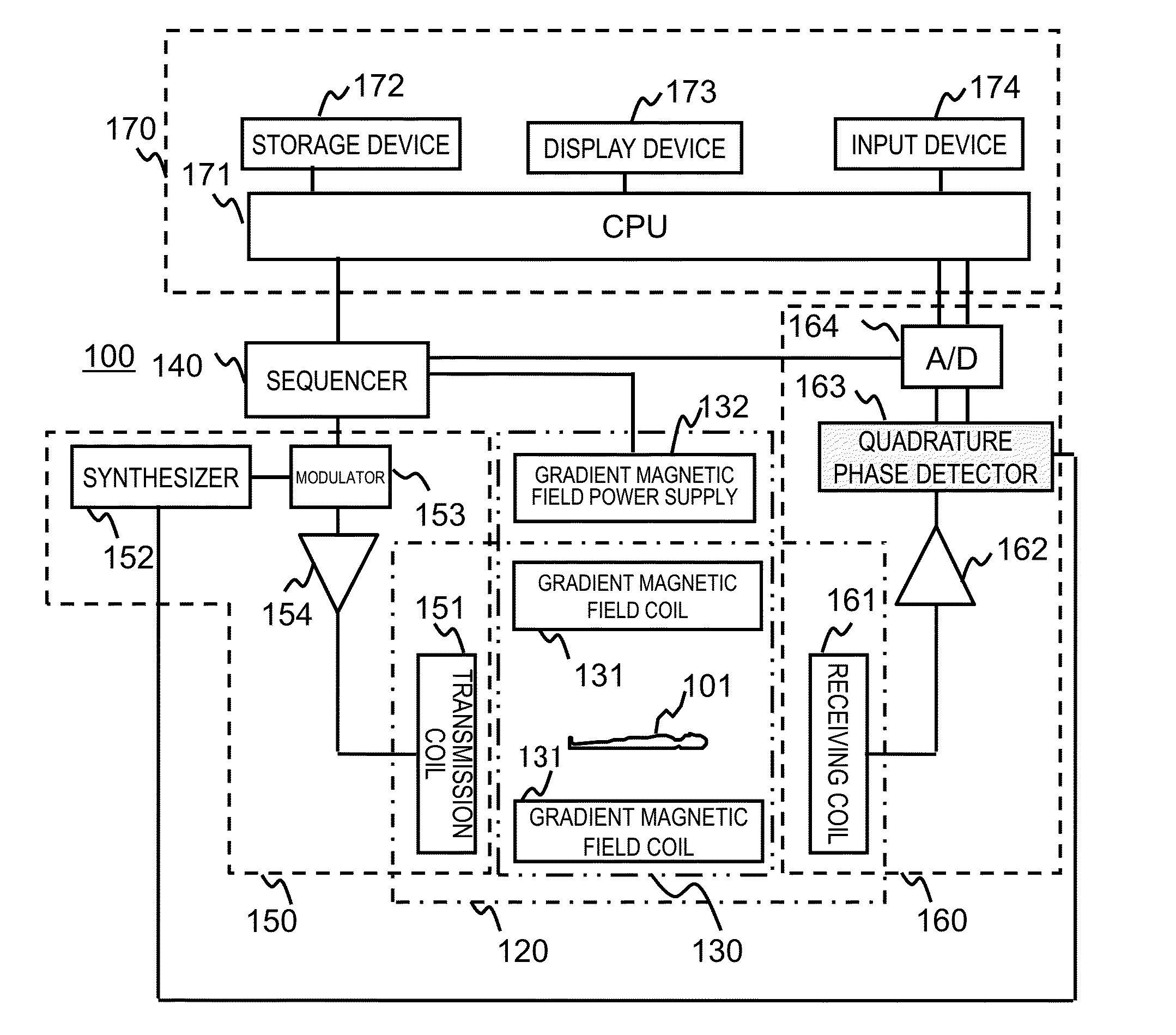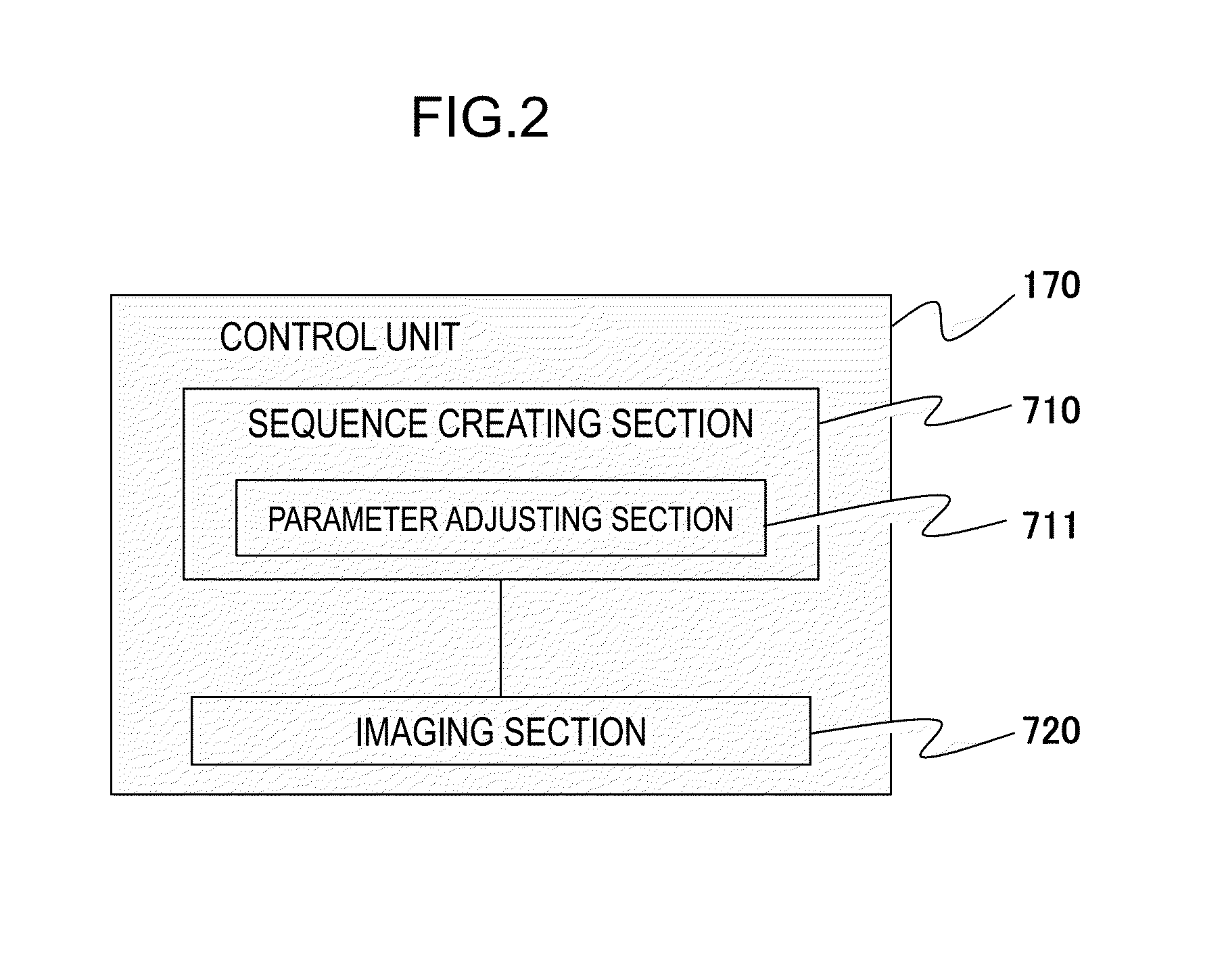Magnetic resonance imaging apparatus and method for reducing unnecessary contrast
a magnetic resonance imaging and unnecessary contrast technology, applied in the field of nuclear magnetic resonance imaging, can solve the problem of insufficient signal strength in the echo near the end, and achieve the effect of reducing unnecessary contrast and achieving intended contras
- Summary
- Abstract
- Description
- Claims
- Application Information
AI Technical Summary
Benefits of technology
Problems solved by technology
Method used
Image
Examples
first embodiment
[0038]Hereinafter, a first embodiment to which the present invention is applied will be described. Hereinafter, in all diagrams for explaining the embodiments of the present invention, the same reference numerals are given to components having the same functions, and repeated explanation thereof will be omitted.
[0039]First, the overview of an example of an MRI apparatus 100 of the present embodiment will be described with reference to FIG. 1. FIG. 1 is a block diagram showing the overall configuration of the MRI apparatus 100 of the present embodiment. The MRI apparatus 100 of the present embodiment obtains a tomographic image of an object 101 using the NMR phenomenon. As shown in FIG. 1, the MRI apparatus 100 includes a static magnetic field generation unit 120 that generates a static magnetic field, a gradient magnetic field generation unit 130 that applies a gradient magnetic field to the object 101 placed in the static magnetic field, a signal transmission unit 150 that transmit...
second embodiment
[0157]Next, a second embodiment to which the present invention is applied will be described. In the first embodiment, when acquiring the T2-weighted image, adjustment parameters are adjusted so as to reduce the influence of T1. On the other hand, in the present embodiment, when acquiring the T1-weighted image, adjustment parameters are adjusted so as to reduce the influence of the T2 contrast.
[0158]An MRI apparatus of the present embodiment has basically the same configuration as the MRI apparatus 100 of the first embodiment. The functional configuration of the control unit 170 of the present embodiment is also the same. However, since the images to be acquired are different and the contrasts to be reduced are different as mentioned above, the parameter adjustment process of the parameter adjusting section 711 is different. The pulse sequence to be used and the flow of the imaging process are the same as those in the first embodiment.
[0159]The parameter adjusting section 711 of the ...
PUM
 Login to View More
Login to View More Abstract
Description
Claims
Application Information
 Login to View More
Login to View More - R&D
- Intellectual Property
- Life Sciences
- Materials
- Tech Scout
- Unparalleled Data Quality
- Higher Quality Content
- 60% Fewer Hallucinations
Browse by: Latest US Patents, China's latest patents, Technical Efficacy Thesaurus, Application Domain, Technology Topic, Popular Technical Reports.
© 2025 PatSnap. All rights reserved.Legal|Privacy policy|Modern Slavery Act Transparency Statement|Sitemap|About US| Contact US: help@patsnap.com



